#North Central Railway
Text
कोहरे के मौसम में कालका-साईं नगर शिर्डी-कालका एक्सप्रेस निरस्त रहेगी
इटारसी। उत्तर मध्य रेलवे (North Central Railway) द्वारा जारी अधिसूचना के अनुसार आगामी कोहरे के मौसम (Mausam) में ट्रेन परिचालन का प्रबंधन करने के उद्देश्य से भोपाल मंडल (Bhopal Division) से गुजरने वाली 22456/22455 कालका-साईं नगर शिर्डी-कालका द्विसाप्ताहिक एक्सप्रेस (Kalka-Sai Nagar Shirdi-Kalka Bi-Weekly Express) को निर्धारित तिथियों में निरस्त करने का निर्णय लिया है।
इसके अनुसार 22456…

View On WordPress
2 notes
·
View notes
Note
Trains? >:3
TRAINS :D



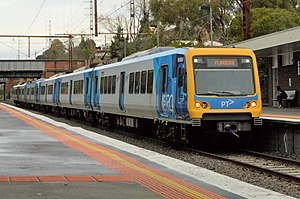
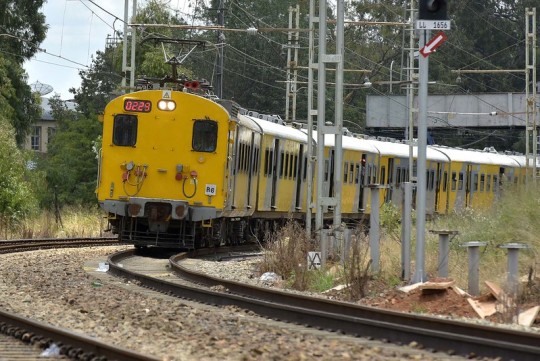


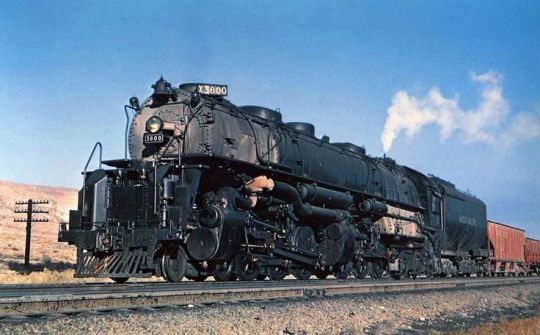

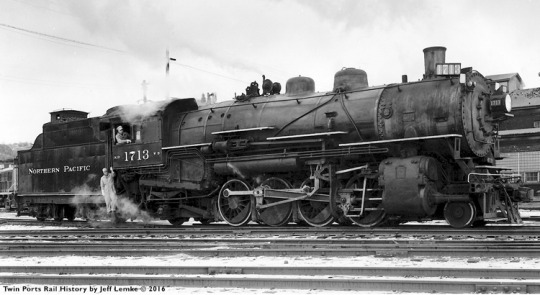
#trainposting#amtrak#electric traction#pennsylvania railroad#electrification#public transit#suburban rail#commuter rail#commuter train#bc rail#tumbler ridge#new york central#caltrain#metro trains#metro north railroad#Northeast corridor#south african railways#asks
15 notes
·
View notes
Text


Just got a very nice D11/2!

I also took some pictures of it with my A5 (They're both GCR engines so I thought it was fitting)

They frens :)
#lner#lner a5#lner d11#gcr improved director#62683 Hobbie Elliott#model trains#model railways#british railways#london and north eastern railway#great central railway#scotland#scottish trains#little bit of lore: the d11/2's were modified for use in scotland#they were also given visual modifications to look more like the north british railway's engines#i like gcr engines theyre very pretty
8 notes
·
View notes
Text
My Friends’ Tribute to Rachael Lillis

Hudson: Thank you, Rachael Lillis, for your job in voicing Misty Waterflower and Team Rocket Jessie.

Jason: You did a fantastic job with voicing those two, Rachael.

Perry: As well as Jigglypuff.

Torpedo: And Ursula from Dinosaur King.

Freddy: Regardless of how many voice roles you had, you did a great job voicing them all, Rachael.

Glenn: You brought joy to 90s kids with your role as Misty.

Otto: And Jessie and Jigglypuff too.

Madeleine: Your roles as those Pokémon characters will always be cherished.

Jimmy Guord: And you yourself will always be remembered and cherished.

Union: Your legacy will always be remembered.

Wasatch: Especially your legacy as the OG Misty and Jessie.

Peter Sam: We will always remember you and carry your legacy with us all.

Centennial: Rest in Peace, Rachael Lillis.

Rebecca: May you find peace in the afterlife.

Jessica: You deserved to live a healthy life full of happiness and love and joy.

Artemis: Veronica Taylor and Eric Stuart will miss you dearly, as they’ve been with you since the beginning.

Queen Roanoke: Your loss has not only left a major impact on the Pokémon community, your sister and your fellow actors, but also us locomotives.

Daylight: You didn’t deserve to pass away from breast cancer.

Zane: You were very cheerful and generous, always happy to greet those who wanted to meet you… especially in person.

Cincinnatian: We hope your sister, family and friends will be okay.

Chief: May God watch over your kind soul and be in peace.

Angeles: May we, including Veronica and Eric, one day, be reunited with you.

Rudolph: Your personality was as cheerful as your voice.

Angelo: Let us carry your memory within us forever more.

Donohue: May your soul join the purest and kindest of all.

Judith: You lived a legend and died a hero.

Stella: Until the day, Rachael Lillis, till all are one…

Red Robin: Till all are one…

Jewel: We all hope you find eternal peace up in heaven, being watched over by God. Rest in Peace…
These are the tributes that some of my friends from the 20 American railroads said for Racheal Lillis. After I told all my friends from the 20 American railroads about the passing of Rachael Lillis, they were all as devastated as I was. And they too wanted to pay their tributes to the OG Misty and Jessie.
#rachael lillis#tribute#rest in peace#rip rachael lillis#sad news#pokemon misty#pokemon jessie#misty waterflower#team rocket jessie#new york central#pennsylvania railroad#milwaukee road#chicago & north western#burlington route#union pacific#northern pacific#great northern#southern railway#norfolk and western#southern pacific#chesapeake & ohio#baltimore & ohio#santa fe railroad#rock island railroad#missouri pacific#seaboard air line#atlantic coast line#gulf mobile & ohio#illinois central#the genie team
9 notes
·
View notes
Text

An LNWR Claughton passes beneath the "Birdcage" bridge at Rugby with a Euston-bound express, while a Great Central 9P passes above with a northbound express.
#trains#steam locomotive#LNWR Claughton class#GCR Lord Farringdon class#London & North Western Railway#Great Central Railway#Rugby#steam nostalgia
6 notes
·
View notes
Text
...of Anoraks, Pufferküsser and Tragics!
A short foreword and explanation:
My friend Michael in London has been doing a blog since blogs became a thing. He started out to review, comment on and complain about all things Apple. Hence the blog’s URL: www.macfilos.com.
However over the years his obsession with photography and cameras, in particular Leica equipment, became the main focus of his blog. The blog name stayed the same, but it is…
#American 4-4-0#Beecham#Black 5#British Heritage Railways#Flying Scotsman#Great Central Railway#Great Western Mainline#GWR#Isambard Kingdom Brunel#Jacobite Steam Train#Leica#LNER#London Midland Scottish#London Victoria Station#National Railway Museum York#New Freedom#Norfolk and Western#North Norfolk Railway#North Yorkshire Moors Railway#O. Winston Link#Roanoke#Seattle and Carlisle Rail Line#Severn Valley Railway#Sherbourne Christmas Express#Southern Railway (US)#Steam Locomotives#Train Spotters#UK Rail Tours#UK Railtours#Virginia
0 notes
Video
RPPC of Great Central Railway loco No. 969 @ Trafford Park by Frederick McLean
Via Flickr:
An old RPPC of Great Central Railway (GCR) steam locomotive No. 969 outside Trafford Park engine/locomotive shed (13A). This real photo postcard was produced by 'F. Moore's Railway Photographs' of London, in the very early 1900s. It is annotated with "outside Trafford Park shed". No. 969 was a X4 class 4-2-2 engine, built in the Gorton Works, and new to GCR in Aug 1900. In 1923 the existing railway companies were grouped into 'the big four', the GCR becoming part of the London and North Eastern Railway (LNER) who renumbered the engine as 5969 in Aug 1924. The locomotive was withdrawn from service in Jul 1926, then scrapped back at the Gorton Works. Old/new overhead maps view of shed and sidings:- maps.nls.uk/geo/explore/side-by-side/#zoom=16.0&lat=5... If there are any errors in the above description please let me know. Thanks. 📷 Any photograph I post on Flickr is an original in my possession, nothing is ever copied/downloaded from another location. 📷 -------------------------------------------------
#Great Central Railway#postcard#old postcard#photo postcard#vintage postcard#railway#steam engine#steam train#steam locomotive#steam loco#locomotive#loco#old steam engine#Trafford Park shed#Trafford Park#engine shed#locomotive shed#X4 class#London and North Eastern Railway#LNER#GCR#4-2-2#Gorton Works#flickr
0 notes
Text
North America
USA
New York City
Grand Central Railway Station


0 notes
Text
Planting trees does not necessarily mean a forest is being restored.
---
But efforts to increase global tree cover to limit climate change have skewed towards erecting plantations of fast-growing trees. The reasons are obvious: planting trees can demonstrate results a lot quicker than natural forest restoration. This is helpful if the objective is generating a lot of timber quickly or certifying carbon credits which people and firms buy to supposedly offset their emissions. [...] [I]ll-advised tree planting can unleash invasive species [...]. For more than 200 years India has experimented with tree plantations, offering important lessons about the consequences different approaches to restoring forests have on local communities and the wider environment. This rare long-term perspective should be heeded [...].
Britain extended its influence over India and controlled much of its affairs [...] from the mid-18th century onwards. Between 1857 and 1947, the Crown ruled the country directly and turned its attention to the country’s forests. Britain needed great quantities of timber to lay railway sleepers and build ships in order to transport the cotton, rubber and tea it took from India.
Through the Indian Forest Act of 1865, forests with high-yielding timber trees such as teak, sal and deodar became state property. To maximise how much timber these forests yielded, British colonial authorities restricted the rights of local people to harvest much beyond grass and bamboo. [...] Meanwhile plantations of teak (Tectona grandis), a species well adapted to India’s hot and humid climate and a source of durable and attractive timber, spread aggressively. [...]
---
[G]rasslands and open scrub forest gave way to teak monocultures.
Eucalyptus and other exotic trees which hadn’t evolved in India were introduced from around 1790. British foresters planted pines from Europe and North America in extensive plantations in the Himalayan region as a source of resin and introduced acacia trees from Australia for timber, fodder and fuel.
One of these species, wattle (Acacia mearnsii), first introduced in 1861 with a few hundred thousand saplings, was planted in the Nilgiris district of the Western Ghats. This area is what scientists all a biodiversity hotspot – a globally rare ecosystem replete with species. Wattle has since become invasive and taken over much of the region’s mountainous grasslands.
Similarly, pine has spread over much of the Himalayas and displaced native oak trees while teak has replaced sal, a native hardwood, in central India. Both oak and sal are valued for fuel, fodder, fertiliser, medicine and oil. Their loss [...] impoverished many.
---
India’s national forest policy [...] aims for trees on 33% of the country’s area. Schemes under this policy include plantations consisting of a single species such as eucalyptus or bamboo which grow fast and can increase tree cover quickly, demonstrating success according to this dubious measure. Sometimes these trees are planted in grasslands and other ecosystems where tree cover is naturally low. The result is that afforestation harms rural and indigenous people who depend on these ecosystems [...].
In the Kachchh grasslands of western India communities were able to restore grasslands by removing the invasive gando bawal (meaning “mad tree”) first introduced by British foresters in the late 19th century. [...]
The success of forest restoration efforts cannot be measured by tree cover alone. The Indian government’s definition of “forest” still encompasses plantations of a single tree species, orchards and even bamboo, which actually belongs to the grass family. This means that biennial forest surveys cannot quantify how much natural forest has been restored, or convey the consequences of displacing native trees with competitive plantation species or identify if these exotic trees have invaded natural grasslands which have then been falsely recorded as restored forests. [...]
Planting trees does not necessarily mean a forest is being restored. And reviving ecosystems in which trees are scarce is important too.
---
Text by: Dhanapal Govindarajulu. "India was a tree planting laboratory for 200 years - here are the results." The Conversation. 10 August 2023. [Bold emphasis, some paragraph breaks/contractions, and italicized first line in this post added by me.]
141 notes
·
View notes
Text


June 10th 1768 saw construction start on the Forth and Clyde canal, it was to take 22 years to complete.
The building of a canal across Scotland was first discussed during the reign of Charles II. It was not until the mid-1700s that the building of the Forth and Clyde Canal or “The Great Canal” as it was referred to then, became an actual possibility with funding being raised to carry out the work. The canal was to be built across the Central Belt of Scotland from east to west. The first spadeful was dug out in June 10th 1768 and the construction continued for 22 years including a 7 year period when no work was carried out due to lack of funds. It was the Canal Company’s policy to try to recruit locally to provide employment in the areas the canal crossed.
The work was hard and was manual labour with the use of picks and shovels to dig out heavy wet earth. Wages were about 10d (£0.04p) per day and the workers were a tough lot. Discipline was often hard to maintain and drink was cheap and plentiful causing various problems. Theft of tools and other equipment was common and often the workers were seasonal due to also working in the agricultural land surrounding the canal works. None the less the work was done and the canal was dug. Water was first let into the canal in 1773 when it was filled as far as Kirkintilloch, which increased this town’s profile with additional trades appearing in the area. It was 2 years later that the canal opened as far as Stockingfield, Maryhill. A cut was also made towards Glasgow as far as Hamiltonhill and then funds ran short and worked stopped for 7 years.
In 1784 work resumed when the Government of the time approved a loan of £50,000 to the Canal Company, the money coming from the Forfeited Estates Fund (a legacy of the Jacobite Rebellion in 1745) and this allowed the canal to reach Bowling. The Forth and Clyde Canal was opened from the Firth of Forth to the Firth of Clyde in the summer of 1790 with the first boat navigating its channel in August of that year.
The length of the Canal from eastern sea lock to the western sea lock was 35 miles. In 1791 the Glasgow Branch was extended from Hamiltonhill to Port Dundas giving it a length of 3.5 miles. There are 39 locks to navigate on the canal with 20 locks on the eastern section the firth of Forth to Wyndford and 19 on the western section from Maryhill to Bowling on the Firth of Clyde. The canal was crossed by many bascule bridges and made use of aqueducts such as the one over the Luggie at Kirkintilloch and the river Kelvin in Glasgow.
The canal served three main purposes. It allowed seagoing vessels passage from east to west or vice versa, therefore avoiding the long passage around the north of Scotland. It provided the fast movement of goods. Agricultural produce, mineral resources and locally produced goods could be transported more easily across Scotland. It also acted as a way for travellers to move across Scotland using “Swift” boats that linked to coach services.
The Forth and Clyde Canal had an active life into the years of the Second World War though by this time railways were carrying more goods around the country. Trade was slowly falling away though transits through the canal and day tripping continued. Eventually on 1 January 1963 the Forth and Clyde Canal closed to through traffic.
As part of the millennium celebrations in 2000, National Lottery funds were used to regenerate both canals. A boat lifting device, the Falkirk Wheel, was built to connect the Union and Forth & Clyde canals and once more allow boats to travel from the Clyde or Glasgow to Edinburgh, with a new canal connection to the River Carron and hence the River Forth. The Falkirk Wheel opened on 27th May 2002 and is now a tourist attraction. The Helix project, which includes the magnificent Kelpies is also part of this ongoing regeneration.
24 notes
·
View notes
Text
The Lost Special
CW for discussion of sexual abuse and capital punishment.
Originally published in The Strand in 1898, i.e. during the hiatus years, this would be collected with a bunch of other Doyle stories in the Round the Fire Stories collection released in 1898. Doyle continued to have stories regularly published during the hiatus.
The London and West Coast Railway Company is fictitious; the company that operated the line discussed in this route was the London and North Western Railway (LNWR), the biggest revenue earner of the period due to the sheer size of its operations. It would become part of the London, Midland and Scottish Railway (LMS) in 1922 during "Grouping" i.e. the merger of British railway companies into four major ones. The LNWR name came back as the London Northwestern Railway brand of West Midlands Trains in 2017, operating commuter and semi-fast services from Euston. That franchise is due to operate until 2026, at which point, considering the likely result of the upcoming election, it will be nationalised. What happens to the name after that remains to be seen.
Liverpool Central refers to two stations. The one here is the six-platform "High Level" station, opened in 1874 as the headquarters of the Cheshire Lines Committee (CLC) and offering services to Manchester Central, London St. Pancras or even Harwich for the ferry services to the Netherlands. The CLC remained independent after Grouping
There was also, slightly to the North West. the 1892-opened "Low Level" station, that was underground, opened by the Mersey Railway, but with staircase access to the High Level one and provision for a through railway connection left to that station if it was decided to join the two lines. This operated local trains towards Birkenhead using the world's second underground railway after London. This also stayed its own operation after Grouping in 1922; both companies would become part of British Railways on nationalisation in 1948.
In 1966, the Beeching Axe saw the High Level station have nearly all its services diverted to Liverpool Lime Street, with only those to Gateacre still calling there. BR wanted to stop those entirely, but local opposition prevented that. With no need for six platforms, two become a car park and the station ended up with just one functional platform in 1970, ending up in rather a state of decay. It shut entirely in 1972 and was demolished, the Gateacre services going, along with the whole North Liverpool Extension Line.
The Low Level station, however, still very busy, would have better fortunes - it would become the centre piece of the new Merseyrail network. The station was renovated, the two lines were linked and today Liverpool Central is one of the busiest stations in the UK outside of Greater London. However, the eastern part of the planned loop, including services to Gateacre, fell victim to budget cuts in the late 1970s.
Rochdale is a town in the Greater Manchester area - at the time it was a textiles hub, but that very much declined from the 1950s and the place has acquired a bad reputation. In 2012, a child sex abuse ring involving British Pakistanis "grooming" white girls was convicted in a high-profile trial and the resulting public reaction was, to put it mildly, racially-tinged. It also came out that the town's deceased former MP (who had in fact been knighted), one Cyril Smith, was a paedophile.
"Specials" refer to trains arranged outside the usual timetable, often in connection with some event. These included football excursions (or FOOTEX in BR parlance) carrying fans to away games around the country. In the hooligan-heavy 1970s and 1980s, BR would use older carriages due to the frequency of them getting damaged by drunken supporters, the whole thing becoming a policing headache. Others included various enthusiast-oriented journeys and "Merrymaker" mystery trips, usually to a seaside destination.
The main companies do not really do these today in anything like the numbers they used to, but various private companies have stepped in, including a West Coast Railways Company oddly enough, that provides the rolling stock, locomotives and drivers for the Jacobite tourist service from Fort William to Mailaig. These charter trains can be found operating multiple times a week, being sold through various different companies. Most use heritage rolling stock with vintage steam or diesel engines involved, with a variety of types catering to your tastes, although a big wallet is generally needed. Like at least £100 for standard class without dining and even then the schedule might not be the most convenient; these trains are planned around the regular services and you might have a long wait sitting in sidings for the next bit of your path to be clear.
In any event, the special train would have cost around £5,412 adjusted for inflation. However, a cursory glance suggests it would actually cost far more to do that today - hence the high prices modern "specials" charge passengers.
Signal boxes were required to log the details of trains passing through - the type could be identified by various lights arranged on the front and later the specific service by four-character codes. Today this is done electronically and monitored at larger control centres - older boxes have generally closed, with some being transported to heritage railways for their use. I would assume that the stations not mentioned did not have their own signal box.
In terms of the stations mentioned here, these were on the 1830-opened Liverpool and Manchester Railway, the first intercity railway in the world.
This route is today part of the City Line in the Merseytravel Network - trains are today operated by Northern or TransPenine Express. It was electrified in 2015. For each station in turn...
St Helens Junction: Still open.
Collins Green: Closed 1951.
Earlestown: Still open, despite being listed for closure in the 1963 Beeching Report.
Newton-le-Willows: Still open. Even had a Motorail terminal for a while, but this is long gone.
Kenyon Junction: Closed to passengers 1961, shut entirely 1963. Various locals have called for reopening it.
Barton Moss, closed 1929.
Parliamentary trains are those which railway companies had a legal obligation to operate - basically to provide cheap services for workers. This could mean one train per day on a route. Some did the bare minimum, some did a lot more. With this requirement no longer around, the term has evolved to mean services run at the legal minimum, even as low as one train a week, because it's cheaper to do that rather than go through a closure process. In some cases, the route would be used for engineering work diversions and so it is needed to keep up driver familarity. Current examples include Pilning, which has two trains a week on a Saturday. The most notable is Teeside Airport, which is meant to serve the airport of that name that operates four to six passenger flights a day, but is a fifteen-minute walk away, so getting a bus is much more preferred. This got one train westbound a week until May 2022, when its platform was deemed unsafe and Teeside International Airport refuses to pay for repairs.
Railway companies had their own police forces; these would later come under the British Transport Police.
Many mines and industrial planets had connections to the national network for transporting goods like coal or clay; BR even developed a "Merry-Go-Round" system allowing hoppers to be filled up and emptied while moving at a very slow speed to save time on shunting; newer versions are still in use, despite the coal market having massively declined. Mines would have their own engines - the nationalised National Coal Board kept steam locomotives going until 1982, 14 years after BR stopped using them, with some of their former engines now featuring on preserved lines.
The Vistula river runs through central Poland, including Warsaw.
Many mines would be closed once their seams were worked out to the point of it being now longer economical to run; some are now tourist attractions, at least in limited sections.
France used the guillotine for capital punishment until the abolition of that in 1977. It would also be extensively used, in a slightly different form in the German states, including extensively by the Nazis, until 1966, when East Germany switched to shooting people in the back of the head.
New Caledonia is a French territory in the Southern Pacific that was used as a penal colony at the time; it is currently in a state of political turmoil in a row over expanding the franchise to cover more recent arrivals, something opposed by indigenous groups seeking independence. The proposal has been suspended at time of writing due to France's upcoming elections.
25 notes
·
View notes
Text
Linkon Subway: Line 11
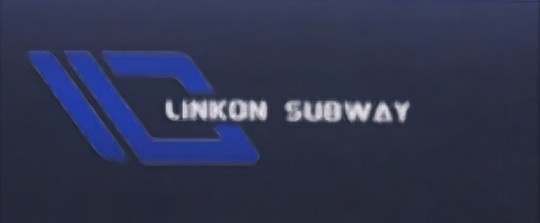
Organization Name: Linkon Metro Supervision Service
Website: www.linkonsupervision.ccm
The Linkon Subway is a frequent mode of transportation showcased throughout the game. The in-game world has a vast system of railway lines, stations, and terminals throughout the Linkon City area.
Line 11 of the subway runs from the Coelum Express Terminal to the Linkon Botanical Garden, it's first availability is at 5:00 AM and it's last stop is at 11:55 PM.
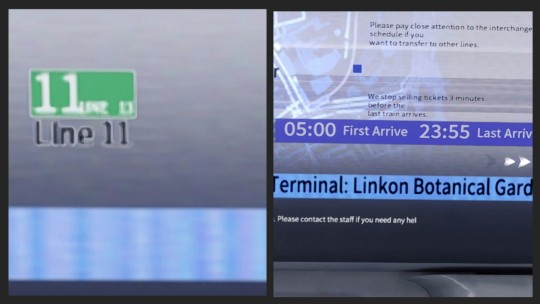
Warnings & Signage:
Here are all of the legible signage/information I spotted on the subway. Overall, it seems to be a very accommodating service!
"Please do not get on or off the vehicle when the door light is flashing"
"Disabled-friendly carriage is available. Please contact the staff if you need any help"
"Please pay close attention to the interchange schedule if you want to transfer to other lines."
"We stop selling tickets three minutes before the last train arrives."
Details:
The specific subway the protaganist boards in "Late Night Encounter" is subway 18. She mentions it's a subway she takes every day. That particular night, she boarded the train from the Garden West Station. At the time, it's announced as the last subway to Linkon Botanical Garden that night.

When the subway circles back to the same departing station again, the opened doors show a glimpse of signage listing the other stops along Line 11. It lines up with the known terminals of this line as well as the next stop shown on the display. The only mismatch is the sign shows the stop before Garden West as "Newtown Avenue" while the internal subway display says it was "Metro Boulevard". The text is pretty hard to make out, but I'll list what I've deciphered so far:


In descending order, it lists:
Linkon Botanical Garden
South (?) (?)
Ch(?) Town
Linkon South Station
(?) Highway [if I squint, it kinda looks like "Alkaline"?]
(?) (?) (?) Park [kinda looks like "Estate World Theme Park"?]
(Jiajang?) (?) (?)
Linkon No. 3 (?)
Pioneer Village
(Bohee?) Tech Park
Garden East
International Exhibition Hall
Garden West [the station where protaganist boarded]
Newtown Avenue
Linkon Library
University of Linkon
Commerce Harbor
(?) [the first word kinda looks like "Public" and the last word looks like "Center"?]
Moonrise St.
River Bridge
Jayden North
Duke's Bay
Cloud Train Terminal (likely an unintended artifact before the name "Coelum Express" was finalized?)
After defeating the Wanderer, the subway station they exit from has another sign identifying Line 11 and a sign indicating the following locations are nearby:
Garden West
Central Park
Century Center
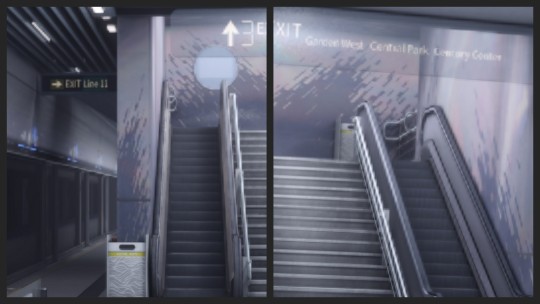
Other Linkon Subway Lines:
In a few scenes, we get a glimpse at the map of subway lines. I was unable to gather any useful details from it. But if you spot something, pls holler lol.
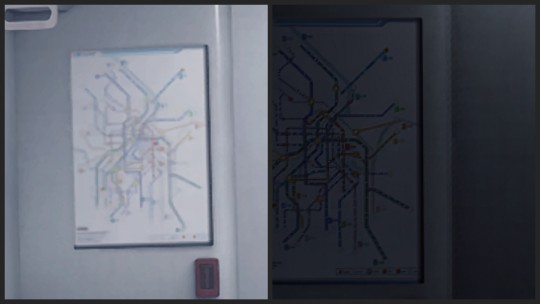
Funny Details:
If you look closely, you can spot a couple of misspellings in the signage:
Instead of "Next Stop", the display reads "Nest Stop"
In the message about disability carriages, it tells you to contact the staff if you "need any hel"

#love and deepspace#lads#lads linkon city#linkon city#love and deepspace trains#lads trains#love and deepspace subway#lads subway
18 notes
·
View notes
Video
Great Central Railway Birstall Leicestershire 31st August 2024 por loose_grip_99
Por Flickr:
It's been a while since I've been to the foot-crossing at Birstall but then again it's been a while since new-build A1 4-6-2 60163 Tornado has pulled a passenger train! Facing and heading north with the returning 10.00 ex-Loughborough Tornado creates a bit of excitement on the gradient out of Leicester.
10 notes
·
View notes
Text
What-If: American Railroads — Section 1: Railroads Still Around
Now with my alternate history of American railroads, it involves and revolves around 20 American railroads…
New York Central System (NYCS)
Pennsylvania Railroad (PRR)
Chesapeake and Ohio (C&O)
Baltimore and Ohio (B&O)
Norfolk and Western (N&W)
Southern Railway (SOU)
Seaboard Air Line (SAL)
Atlantic Coast Line (ACL)
Gulf, Mobile and Ohio (GMO)
Illinois Central (IC)
Missouri Pacific (MP)
Chicago, Rock Island and Pacific // Rock Island (CRI&P)
Chicago and Northwestern (CNW)
Chicago, Milwaukee, St. Paul and Pacific // Milwaukee Road (CMStP&P)
Chicago, Burlington and Quincy // Burlington Route (CB&Q)
Northern Pacific (NP)
Great Northern (GN)
Union Pacific (UP)
Southern Pacific (SP)
Atchison, Topeka and Santa Fe // Santa Fe (ATSF)
#history#railroad#railroads#railway#railways#new york central#pennsylvania railroad#chesapeake & ohio#baltimore & ohio#norfolk and western#southern railway#seaboard air line#atlantic coast line#gulf mobile & ohio#illinois central#missouri pacific#rock island railroad#chicago & north western#milwaukee road#burlington northern#northern pacific#great northern#union pacific#southern pacific#santa fe#alternate history
3 notes
·
View notes
Text
The first hydrogen-powered train in North America is taking riders on a two-and-a-half hour trip through central Quebec this summer.
It's a demonstration that launched earlier this month to show how electricity stored as hydrogen can replace diesel fuel on railways where installing electrified rails or overhead wires would be challenging.
Advocates for the use of hydrogen in heavy transportation say it could raise awareness and boost confidence in the emerging technology in North America.
The tourist train made by French company Alstom runs from Montmorency Falls in Quebec City to Baie-Saint-Paul — partway along the Train de Charlevoix route — on Wednesday through Sunday until Sept. 30, carrying up to 120 people in two rail cars. [...]
Continue Reading.
Tagging: @politicsofcanada
130 notes
·
View notes
Text
North Korean dictator Kim Jong Un may have ordered at least 30 government officials to be executed after the devastating floods over the summer that killed thousands, according to a new report from South Korea.
The South’s TV Chosun reported Tuesday that North Korean authorities sentenced between 20 and 30 people to capital punishment last month for their failure to stop the deadly flooding.
An official was quoted as telling the outlet, "Twenty to 30 cadres in the flood-stricken area were executed at the same time late last month."
While it’s difficult to know the details given the North’s extreme secrecy, the North Korean Central News Agency (KCNA) has reported that Kim ordered authorities to "strictly punish" the officials after catastrophic floods hit the Chagang Province, near the border with China, in July.
North Korean state media reported that heavy rains in late July left more than 4,000 homes as well as numerous other public buildings, structures, roads and railways flooded in the northwestern city of Sinuiju and the neighboring town of Uiju.
Kim blamed public officials who had neglected disaster prevention for causing "the casualty that cannot be allowed."
The North has rebuffed offers of aid from China, Russia and even South Korea, with whom tensions remain at all-time highs.
Kim made a two-day tour of Uiju in early August to meet flood victims and discuss recovery efforts. While touring there, Kim was quoted by KCNA as accusing the South of exaggerating the extent of the damage from the floods, decrying it as a "smear campaign" and a "grave provocation" against his government.
8 notes
·
View notes
